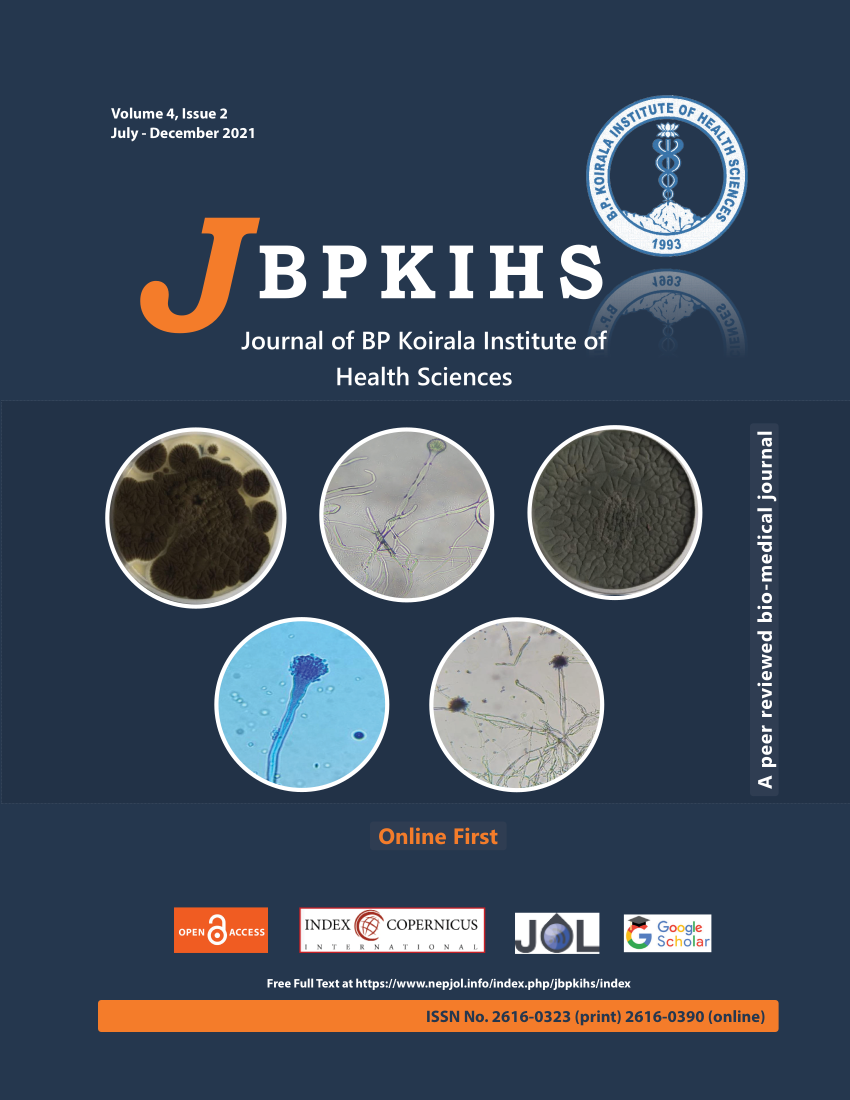Postoperative Analgesic Effect of Morphine Added to Ropivacaine for Fascia Iliaca Compartment Block following Femoral Fracture Surgeries: A Randomized Controlled Trial
DOI:
https://doi.org/10.3126/jbpkihs.v4i2.41447Keywords:
FICB, Morphine, Postoperative analgesia, Ropivacaine, UltrasonographyAbstract
Background: Fascia iliaca compartment block (FICB) following femoral fracture surgery provides effective analgesia. Reports of morphine added to ropivacaine for peripheral nerve blocks are limited. We designed this study to investigate the effects of morphine as an adjuvant to ropivacaine in FICB for femoral fracture surgery.
Methods: Seventy patients undergoing spinal anaesthesia for femoral fracture surgery were randomized to undergo ultrasound aided FICB with ropivacaine alone (n = 35) or in combination with morphine (n = 35). FICB was performed postoperatively with 20 ml of 0.375% ropivacaine plus 2 ml normal saline or 20 ml of 0.375% ropivacaine plus 2 ml (1 mg/ ml) morphine. Primary outcome parameter was the duration of analgesia. Secondary outcome parameters were total doses of rescue analgesics, sedation scores, Numeric Rating Scale (NRS) scores for pain and patient satisfaction.
Results: Demographic data were similar between the two groups. Patients receiving morphine adjuvant had longer duration of postoperative analgesia (541 ± 167 vs 634 ± 164 mins, p = 0.01; Mean difference -92.71; 95% CI: -171.95 – -13.47). Requirement of postoperative rescue analgesics for the first 24h was significantly lesser (tramadol 77 ± 25 vs 62 ± 22 mg, p = 0.01; Mean difference 14.28 ;95% CI: 2.95 – 25.63) in patients receiving morphine adjuvant. Postoperative NRS scores and sedation scores were comparable between the two groups.
Conclusion: Morphine as an adjuvant to ropivacaine for FICB significantly prolongs the duration of postoperative analgesia.
Downloads
Downloads
Published
How to Cite
Issue
Section
License
Copyright (c) 2021 Journal of BP Koirala Institute of Health Sciences

This work is licensed under a Creative Commons Attribution-NonCommercial-NoDerivatives 4.0 International License.
This license enables reusers to copy and distribute the material in any medium or format in unadapted form only, for noncommercial purposes only, and only so long as attribution is given to the creator.




